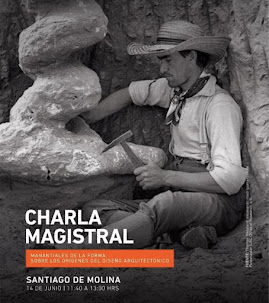El aguijón de la primera palabra marca la extensión de la totalidad del diccionario. Y claro, ¿Cuánto espacio debe dedicarse a esa misma primera definición? AALTO. Alvar AALTO. Entonces se abandona, decía.
Hay algo en ese conjunto de vocales y sonidos, AALTO, en su misma pronunciación, que hace que todo a su alrededor sea complejo. Un leve tartamudeo que alarga la primera vocal y la convierte en algo difícil de pronunciar sin parecer algo lelo. A-A-LTO. Se abre la boca y se retrae la lengua con un leve trabucarse, igual que sucede con la visita a alguna de sus obras: A-A... Llegados a un momento en la vida, además se baja el volumen de esas dos primeras Aes... Como si hubiesen penetrado muy dentro del arquitecto que las pronuncia y se hubiesen fusionado formalmente en una especie de A larga como una M. Ese proceso de macla cerebral afecta a nuestras relaciones con la obra real del arquitecto finés. También su obra se funde neuronalmente en un sólido Maireasainayokimuuratsalo... Una especie de amable grúfalo de ladrillo y madera.¿Cuántos años más seguiremos boquiabiertos? ¿cuántas generaciones más permanecerán balbuceantes ante ese AAAAAaaaalto?
A Alvar Aalto se vuelve como a los amigos. Tarde o temprano se vuelve. Como el que acude al calor de una taza de café o a la proximidad de una chimenea. AALTO es la casa de nuestros padres.
The sting of the first word dictates the scope of the entire dictionary. And, of course, how much space should be dedicated to that very first definition? AALTO. Alvar AALTO. And so, they give up, as I was saying.
There’s something about that combination of vowels and sounds, AALTO, in its very pronunciation, that makes everything around it complex. A slight stammer that stretches the first vowel and makes it hard to say without seeming a bit foolish. A-A-LTO. You open your mouth and retract your tongue with a slight stumble, just like visiting one of his works: A-A... At a certain point in life, you even lower the volume of those first two As... As if they had penetrated deep inside the architect who pronounces them and had formally fused into a kind of long A, like an M. This process of cerebral fusion affects our relationship with the real work of the Finnish architect. His work also merges neuronally into a solid Maireasainayokimuuratsalo... A kind of gentle gruffalo made of brick and wood. How many more years will we remain awestruck? How many more generations will stay tongue-tied before that AAAAAaaaalto?
You return to Alvar Aalto like you return to friends. Sooner or later, you come back. Like seeking the warmth of a cup of coffee or the closeness of a fireplace. AALTO is the home of our parents.























































































































